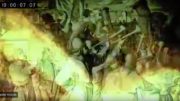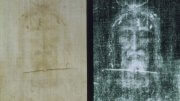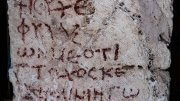Playback speed:
In our coverage of biblical archaeology, we explore recent archaeological discoveries that bolster the historical authenticity of biblical narratives. In this post, we delve into the Assyrian Military Camp and the Angelic Intervention, uncovering their significance and providing insights into the ancient world as described in the Bible. Stay tuned as we continue to bridge the past with the present, revealing the rich history that supports our faith.
Introduction In a groundbreaking archaeological discovery, an Assyrian military camp has been unearthed near Jerusalem, dating back to the reign of King Sennacherib. This discovery has profound implications for understanding the historical context of one of the Bible’s most dramatic events: the angelic intervention that killed 185,000 Assyrian soldiers as described in 2 Kings 19:35 and Isaiah 37:36. This post delves into the archaeological findings and explores their significance in confirming Biblical narratives.
The Discovery The Assyrian military camp was discovered in the vicinity of Jerusalem, an area known for its rich historical and biblical significance. The site includes remnants of military fortifications, weaponry, and various artifacts that indicate a large-scale military presence. According to archaeologists, this camp dates back to the time of Sennacherib’s siege of Jerusalem in 701 BCE (Archaeology News Online Magazine) (Bible Archaeology Society).
Historical Context: The Siege of Jerusalem The siege of Jerusalem by Sennacherib is a well-documented event in both Assyrian and Biblical records. Sennacherib, the king of Assyria, launched a massive military campaign against Judah, which is vividly described in the Bible. The Assyrian forces surrounded Jerusalem, and the situation appeared dire for King Hezekiah and the inhabitants of the city.
Biblical Account of the Angelic Intervention According to the Bible, King Hezekiah prayed fervently for divine intervention. In response, the angel of the Lord went out and struck down 185,000 soldiers in the Assyrian camp. The next morning, when the people arose, they found the camp filled with dead bodies. This miraculous event forced Sennacherib to withdraw his forces and return to Nineveh (2 Kings 19:35-36, Isaiah 37:36-37).
Archaeological Evidence and Its Significance The discovery of the Assyrian military camp provides compelling support for the Biblical narrative, though it does not confirm the supernatural elements. The presence of such a large military encampment near Jerusalem during Sennacherib’s reign aligns with historical accounts and the Biblical description of the siege (Archaeology News Online Magazine).
Archaeologists found various artifacts, including Assyrian weaponry, armor, and even inscriptions that mention Sennacherib. These findings corroborate the historical records of an Assyrian siege and underscore the significant military threat faced by Jerusalem at that time.
Implications for Biblical Scholarship This discovery is significant for both historians and biblical scholars. It provides tangible evidence of the events described in the Bible and helps to contextualize the dramatic deliverance of Jerusalem. While the archaeological evidence does not confirm the angelic intervention, it does validate the historical setting of the Biblical account.
Conclusion The unearthing of the Assyrian military camp near Jerusalem is a remarkable discovery that enriches our understanding of ancient history and Biblical narratives. It offers a fascinating glimpse into a pivotal moment in Judah’s history, where faith and archaeology intersect. As scholars continue to study the site, we may uncover even more insights into this extraordinary event.
Further Reading For more detailed information on this discovery and its implications, search Archaeology Magazine and Biblical Archaeology Review.
References
- Archaeology Magazine. (2024). Assyrian Military Camp Found Near Jerusalem. Link to article
- Biblical Archaeology Review. (2024). Recent Discoveries in Biblical Archaeology. Link to article
- The Times of Israel. (2024). At Shiloh, Archaeologist Finds Artifacts Hinting at Biblical Tabernacle. Link to article
By exploring these archaeological findings, we gain a deeper appreciation of the historical and spiritual significance of the Biblical accounts, bridging the past with the present in our continuous quest for understanding.
The author generated this text in part with GPT-4.0, OpenAI’s large-scale language-generation model. Upon generating draft language, the author reviewed, edited, and revised the language to their own liking and takes ultimate responsibility for the content of this publication.





